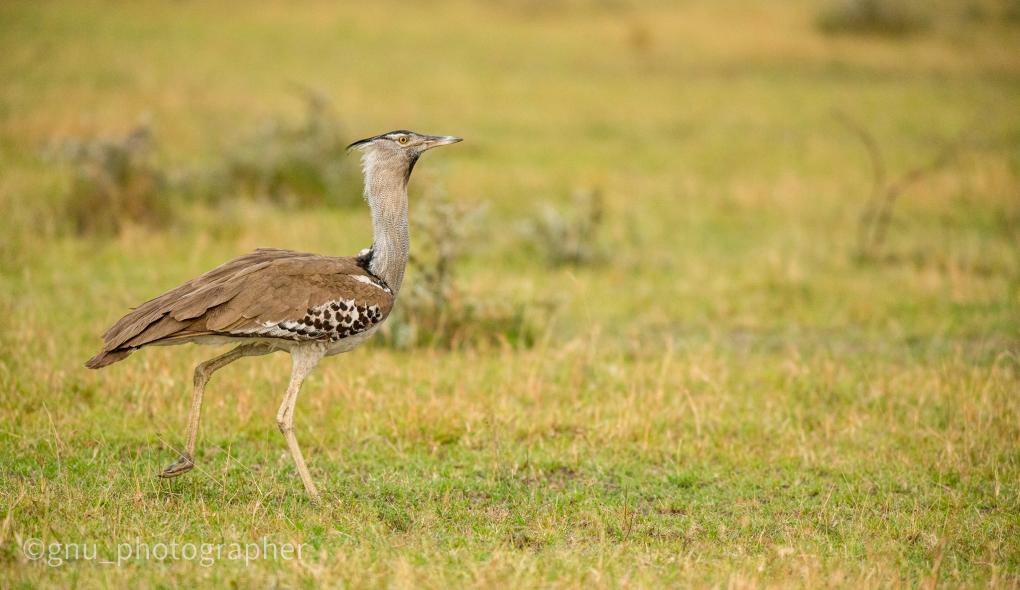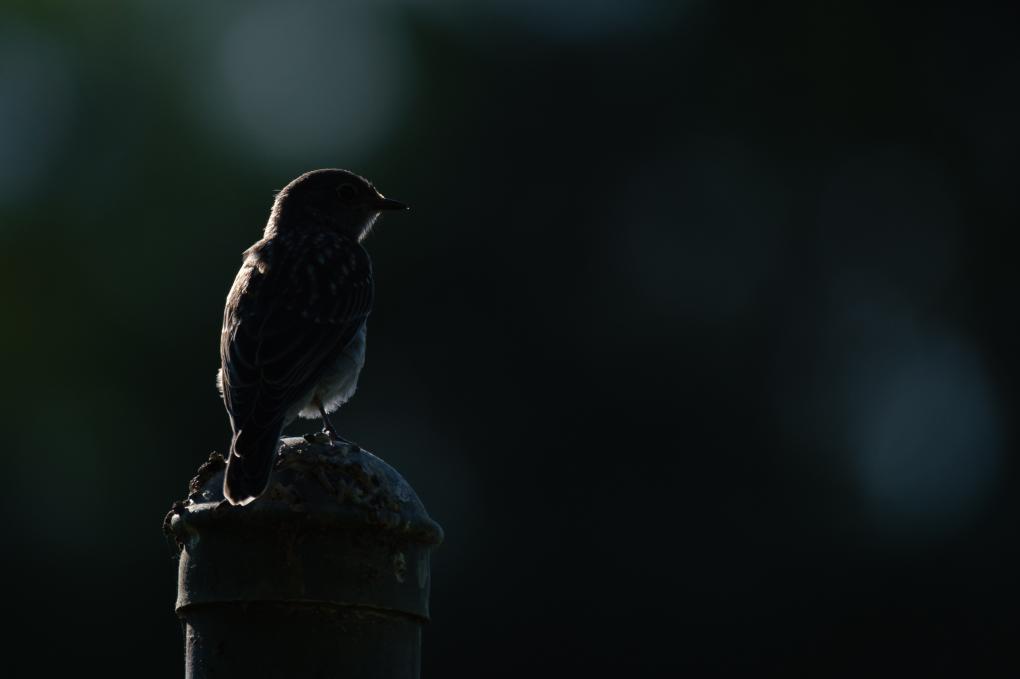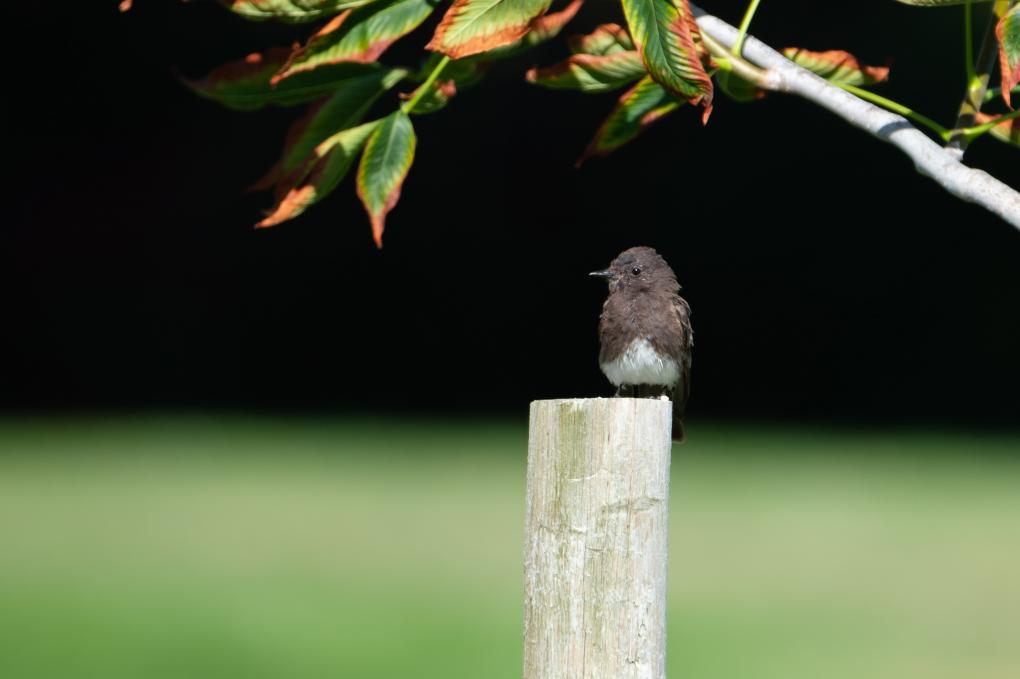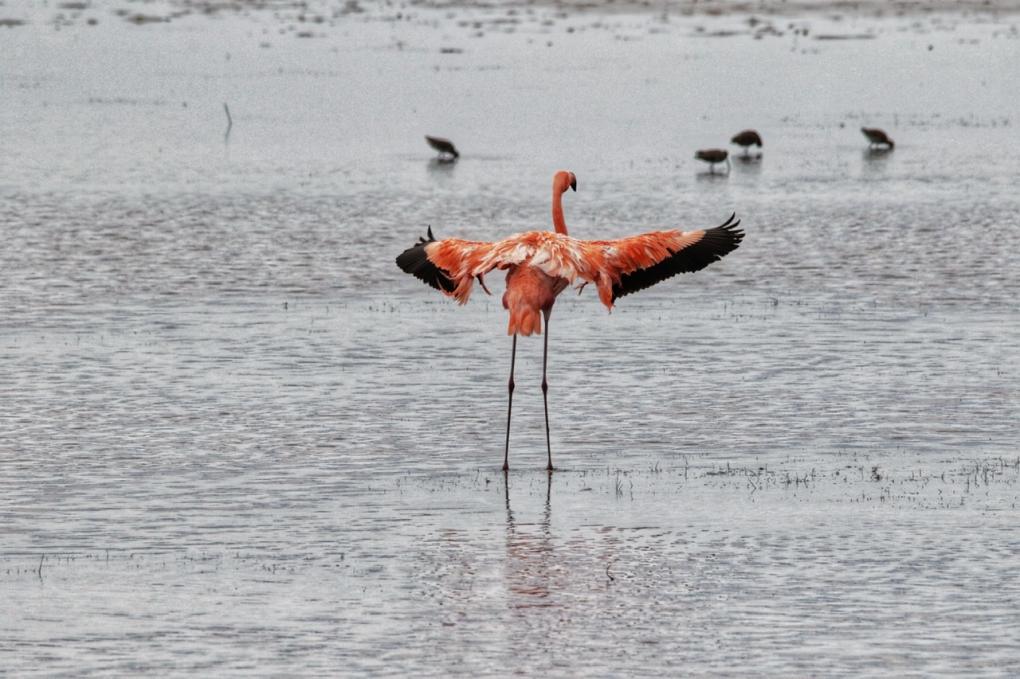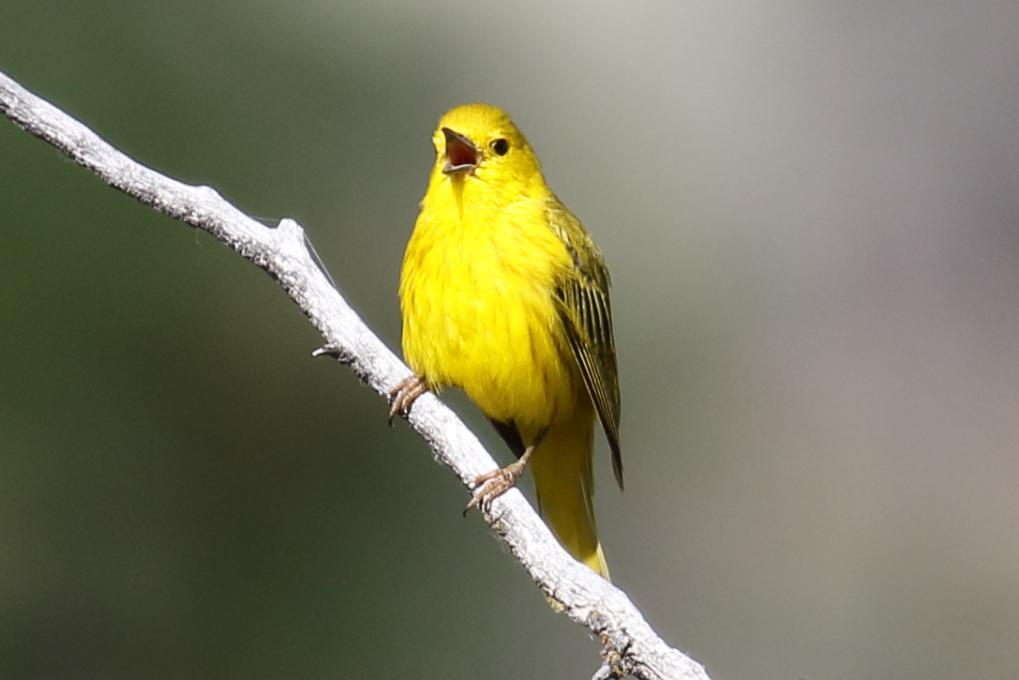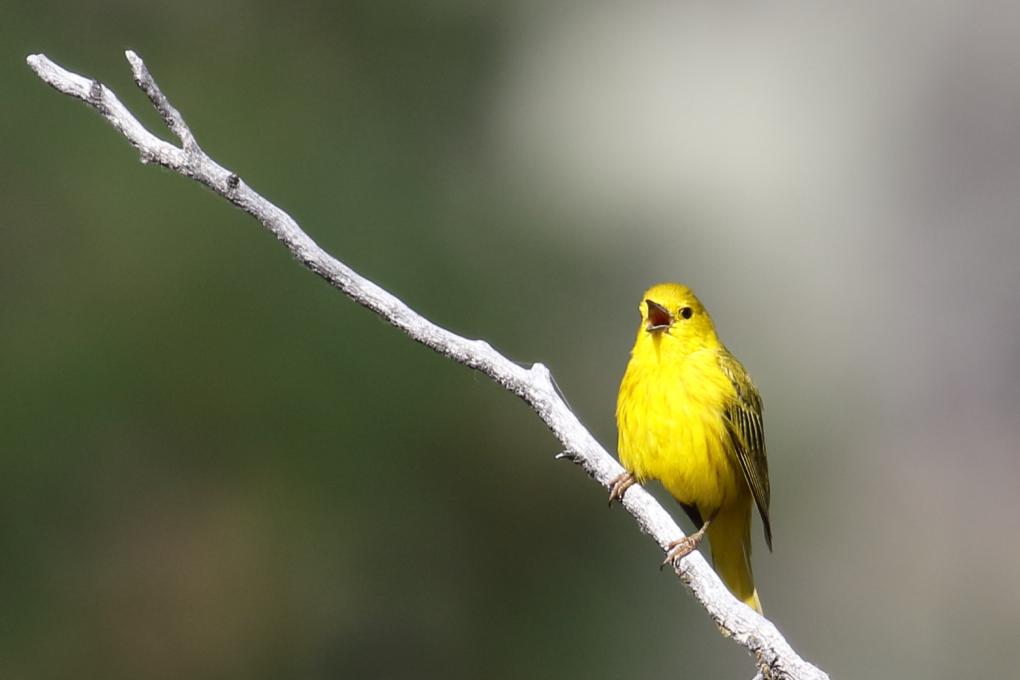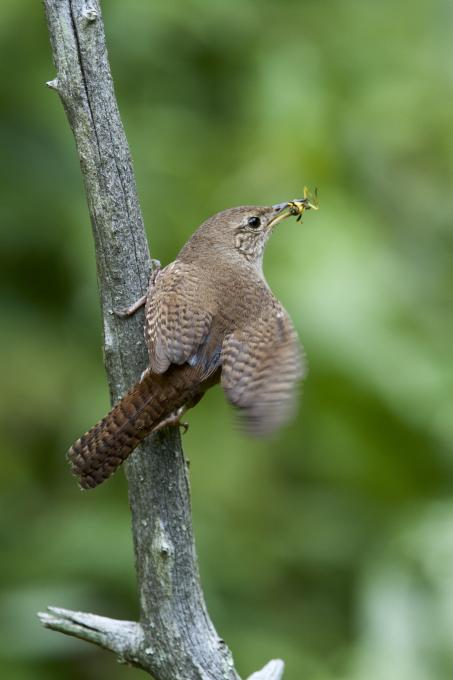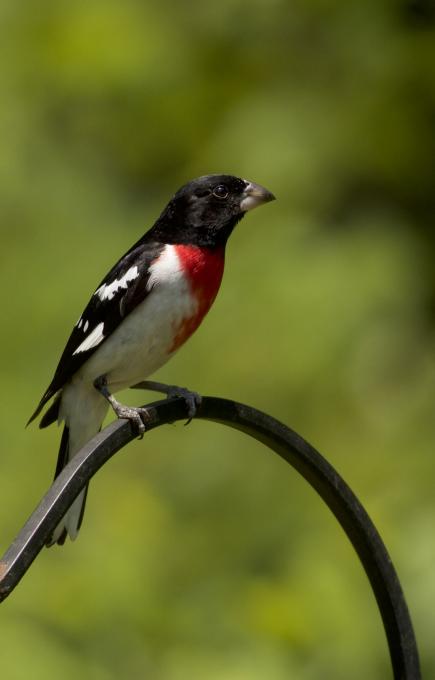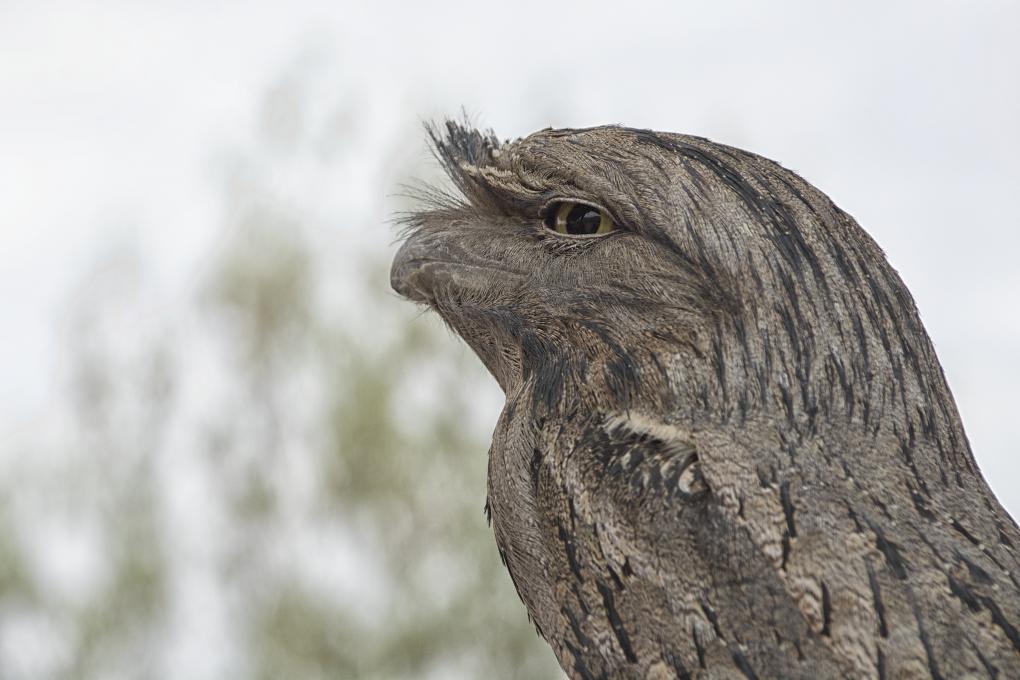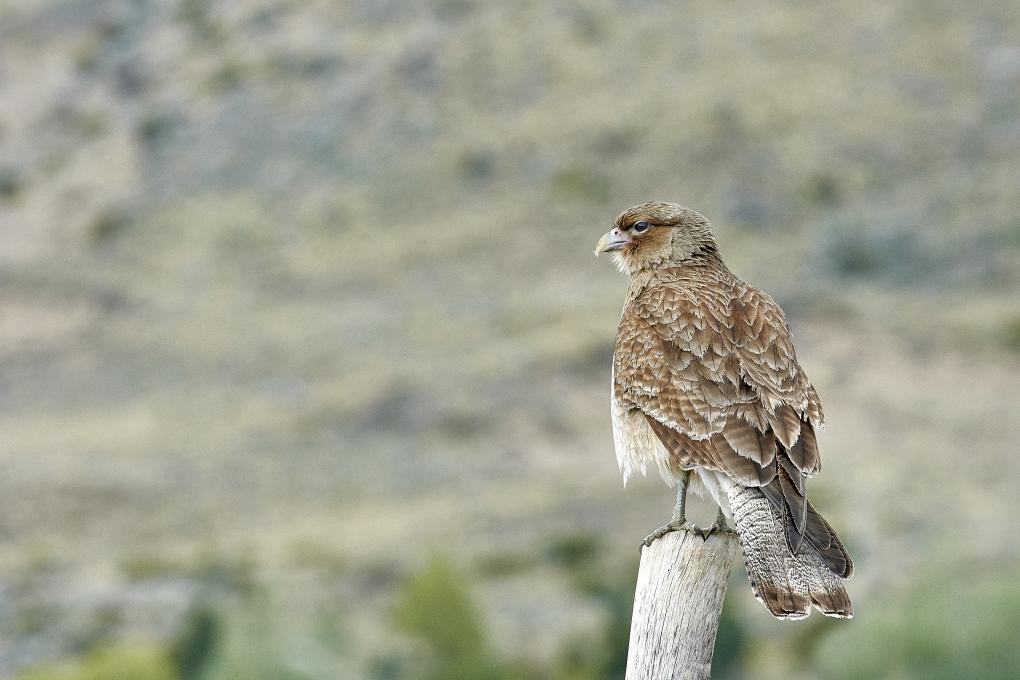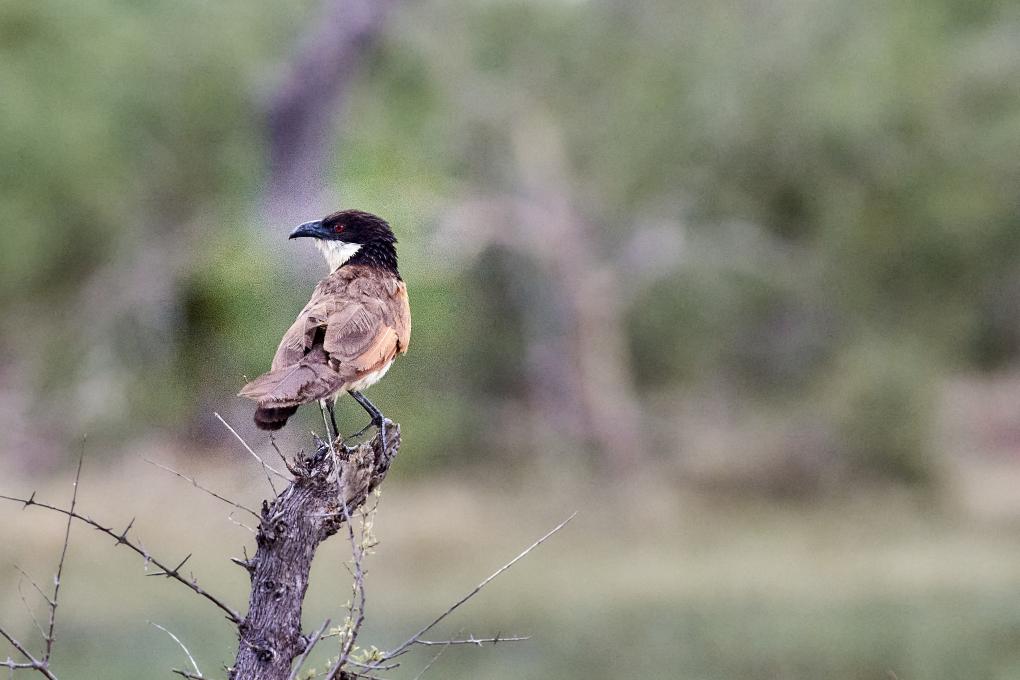The Cornell Lab Bird Academy › Discussion Groups › Bird Photography with Melissa Groo › Practice Crafting Great Bird Photos
-
While I lived in Florida for some time, I've never been able to capture decent images of Osprey...until one appeared in my backyard to munch on a tasty fish caught from our lake. During the photo encounter a Bald Eagle and Hawk circled the Osprey watching for an opportunity to swoop down and steal the fish. But the Osprey would not have it and spread its wings around the fish to hide it from any aerial attacks. Both images are using the rule of thirds.


-
Wow! That is such beautiful close ups. Amazing photos.
-
@Isabelle Thanks so much Isabelle! It was truly a magical encounter.
-
I am in awe of these photos! Amazing. I see osprey in my area, but they are always high up in the trees. wow!
-
When I lived in Maine, I once saw an osprey dive and come up with a fish. Immediately an eagle was on it, trying to get it to drop the fish. Watched through binoculars for a few minutes until the eagle gave up. Apparently, they're pretty lazy.
-
Great shot, sharp, exposure , blurred background etc. great moment for you to have caught.
-
Love the eyes in the first photo...intensity caught!
-
-
Dickcissel with backlighting
 Barn swallow with subject in focus and background blurred
Barn swallow with subject in focus and background blurred
 Bald eagle side lighting
Bald eagle side lighting

-
Great images and really cool to see the different types of lighting.
-
That Dickcissel photo is just gorgeous! Bravo!
-
-
I live in the desert so there isn't much in the way of sit spots or car-blind birding. I went to different locations for each photo. For the common bee eater (bottom) I placed the nest hole in the upper right-hand 1/3 of the photo and photographed the bird as it exited. There is a lot of space in front of the bird, to move into. The white spectacled bulbul (middle) was in my bird-bath and I broke the rules by putting it dead center, but I wanted to show motion. I aimed low (belly-water interface) and got that in focus (F 5.7) and took a medium slow shutter speed of 1/125 of a second. Finally I broke the rules with the pale rock finch but was so happy that I got water drops on its face/throat. I probably should have moved it to the left 1/3 of the photo and had more of the water in front of it, to the right.



-

 I worked with the rule of thirds in both these images. The first, common yellowthroat, and the second, sandhill crane photos were taken on an overcast day so the lighting was not as dramatic. I was more focused on exposure-light meter to prevent them from being too dark.
I worked with the rule of thirds in both these images. The first, common yellowthroat, and the second, sandhill crane photos were taken on an overcast day so the lighting was not as dramatic. I was more focused on exposure-light meter to prevent them from being too dark. -
I love how the painted bunting came out crisp but the leaves in the foreground and background are blurred almost creating a frame. This doesn't follow the rule of thirds bit the blurred edges draw the focus to the bird.

-
Such a beautiful image, Lucy. I love how the colour of the background accentuates the birds colours as well as that really effective blurring.
-
Excellent use of selective focus and aperture, Lucy! Beautiful color contrast as well.
-
I really like this photo. It shows the colour features of the bird. It would have been better if there was no obstructing object. However, on the other hand, I think it also shows how well the bird tries to ambush itself.
-
Really captured the colors beautifully!
-
-
Well, these were shots that were done wrong. First the Chipping Sparrow had harsh noon sun overhead but it lit up his hair do. The Red-winged Blackbird had both the fore ground and back ground in focus, The House Finch was in the rain, no sun. I took the shot out of my sun room window. I still liked some aspect of each of these even though they don't go by the book.



-
I really like the house finch photo because you can see the bird is wet and the small streaks of rain.
-
The house Finch is fabulous! I love the composition, the atmosphere, the rain and its expression! Bravo!
-
Lovely photo! Loved the finch. Just a small note: would have been better if the limbs had not been cut :)
-
I really like all three photos. They are all artfully done, even the shadows. Sometimes I like to see some shadowing because it looks more natural, the way we see the bird in nature most of the time. The house finch is especially lovely with the water droplets and perfectly focused. I hope to take photos like this some day!
-
-
Plain ole house sparrow with side lighting. That really makes the feather texture pop.

 Sorry this isn't a bird-but I used spot metering on this mink's face like Melissa did on the crow to get his eyes, plus backlighting to highlight his fur. It's really hot here today and the birds just weren't out! I'm learning to change my metering mode to accommodate different situations.
Sorry this isn't a bird-but I used spot metering on this mink's face like Melissa did on the crow to get his eyes, plus backlighting to highlight his fur. It's really hot here today and the birds just weren't out! I'm learning to change my metering mode to accommodate different situations. -
Such a cool photo! The bird (sparrow sized?) looks as large as the mink! Perhaps because of the background compression from using your telephoto lens. An interesting effect. Thanks for sharing it! :)
-
-


 The Dove is following the rules I think! The Cattle Egret doesn’t but we wanted to include the Bull with it. Not sure where the Killdeer fits in but liked the shot!
The Dove is following the rules I think! The Cattle Egret doesn’t but we wanted to include the Bull with it. Not sure where the Killdeer fits in but liked the shot! -
These are all nice. I would move the one with the bull over so that even more of the bull is showing and the birds is on the far left hand side-the look on the birds face is special as he's looking at the bull. :-)
-
@Elizabeth Agree Elizabeth! Thanks for the comment!
-
The rule of thirds is a new concept to me. It makes a lot of sense but I always centered the bird. That is the one big thing I learned in this course and I really like how you positioned the dove in this photo. I think it looks better than had you centered it.
-
Sharp focus on that killdeer as they are usually running around...nice work!
-
-
Th

-
Don't know where my text went. Male Western Towhee, back lighting with shadow. This is a wrong use of composition-he needs more room to look into.
-
-
Sometimes I'm just happy if I can get a photo of a bird that is all in the frame, exposed correctly and in focus! But I must say the lighting makes all the difference to the end result and really makes that bird 'shine'! Here are my offerings. Side lighting, rule of three and a slightly different rule of three just to make you smile. Hopefully! 😊



-
Yes, that last use of thirds did make me smile. What is the bird in second photo? Nice shots.
-
@Elizabeth Hi Elizabeth The second image is a female superb fairy-wren. Here's a photo of the male. Found in the south and south east of Australia. Cheers Carole

-
Really like the softness of the side light on the first as well as the beautiful bokeh. Great to see.
-
Love the lighting on photo one with its softness. Yes, photo 3 did bring a smile, thanks!
-
-
Photo is more interesting when using rule of 3rd's. The creamy background makes the main element stand out. I left the leaves on the right side to balance out the image.
 I took this photo at 1/1250, f/6.3 with ISO 500. I also touched it up a bit in Lightroom.
I took this photo at 1/1250, f/6.3 with ISO 500. I also touched it up a bit in Lightroom. -
Great photo!
-
Glad you kept the heart-shaped leaf in the photo!
-
-


 The picture of the American Oystercatcher, taken on my day trip pilgrimage to Cape May yesterday, follows the rule of thirds. The background is blurred in the Red-Tailed Hawk picture. For the Bald Eagle (taken on July 4th!), I broke the rule of thirds. The angle of the bird flying away, and the lack of anything but blue sky beyond it, made it look better to me this way. Fun fact, the Eagle and the Hawk (wasn’t that a John Denver song) were taken only 12 minutes apart, both using the car as a blind, sort of. The Eagle was too far away to care about me. I saw the hawk perched on a wire as I drove home from where I’d just seen the Eagle. The road was very lightly traveled at the time, so I was able to turn around, go back, stop underneath, and take the picture through the sunroof.
The picture of the American Oystercatcher, taken on my day trip pilgrimage to Cape May yesterday, follows the rule of thirds. The background is blurred in the Red-Tailed Hawk picture. For the Bald Eagle (taken on July 4th!), I broke the rule of thirds. The angle of the bird flying away, and the lack of anything but blue sky beyond it, made it look better to me this way. Fun fact, the Eagle and the Hawk (wasn’t that a John Denver song) were taken only 12 minutes apart, both using the car as a blind, sort of. The Eagle was too far away to care about me. I saw the hawk perched on a wire as I drove home from where I’d just seen the Eagle. The road was very lightly traveled at the time, so I was able to turn around, go back, stop underneath, and take the picture through the sunroof. -
Oystercatcher with food, very cool photo!
-
-
 This is a photo in which I think I broke some of the rules. The photo of the Secretary Bird is taken with the negative space behind the bird rather than (the traditional) in front of the bird. I did this to emphasize the Secretary Bird's rearward facing plumes.
This is a photo in which I think I broke some of the rules. The photo of the Secretary Bird is taken with the negative space behind the bird rather than (the traditional) in front of the bird. I did this to emphasize the Secretary Bird's rearward facing plumes.
 I think this Bee Eater photo is more in line with usual bird portrait rules, creamy background, rule of thirds. There is no catchlight in the eye but the iris is clear and evenly lit.
I think this Bee Eater photo is more in line with usual bird portrait rules, creamy background, rule of thirds. There is no catchlight in the eye but the iris is clear and evenly lit. -
In the first photo, it looks like a wide aperture was indeed used producing a blurred background not exactly creamy. I would have placed the bird looking into the blank space, not away from it. The second photo has a nice creamy background, just what we want. Furthermore the bird is off-centered, using the rule of 3rd's and the photo is balanced with the branch on the left.
-
@Gary Thanks for the feedback, Gary! :-)
-
What great birds-I'm loving seeing the birds from around the world. Your break the rules photo makes me want to scoot it over a bit so it is looking into the void-know you did this on purpose to emphasize the plumes. Second one has nice composition-thanks for sharing these birds with us. Libby
-
@Elizabeth Thanks Libby, for your feedback! :) Here's another birds of the world photo - a Kori Bustard. I have a few more on my instagram page if you are interested. It is the same name as my username.

-
-
Here is the same backlit photo of the juvenile western bluebird against a darker background. On the last two photos with the black phoebes (there is a juvenile and its mom). I tried to work on the composition and and trying (rule of 1/3.)



-
Nice comparisons of how light angle changes things!
-
@Elizabeth Thank you Elizabeth!
-
Love the top image! Beautiful rim light and excellent example of the rule of thirds.
-
@Fred Thank you Fred!
-
You caught the lighting nicely in all three photos. Wow!
-
-
I went to my local public park to experiment with what Melissa taught in this lesson. I first put all the settings Melissa recommended on my camera and then tried to find birds and photograph them in different light, and background, paying particular attention to the fact that their eye was lit and there was nothing in the background. I decided to go full manual and see what I could come up with. I was very pleased with the results and I can't wait to experiment again. Here are 3 views of the same juvenile western bluebird - front light, side light and back light (same background - blue sky).



-
Each shot so different with the light, Isabelle. Great! I must get more adventurous and use manual. You've encouraged me!
-
@Carole I know, it was the first time I tried, I am going to experiment more too :) Looking forward to seeing your experimentations.
-
-
Here are original and cropped images of the only time in 3 hours of waiting that this American Flamingo at St. Marks NWR in Florida opened its wings. I was glad to be able to create the final image using the Rule of Thirds and was also pleased that the shorebirds in the background did not distract from the flamingo. ISO 1250, f/10, 1/4000 / Canon 7D II, Sigma 150-600 Contemporary Lens


-
Wow! The colors (and the bird) are beautiful!
-
-
In this case when I shot this Yellow Warbler and used the thirds rule, there were pros and cons. The pro is that I could see the tip of the branch, which created nice balance and closure. However, the bird is a bit small in the field. So I decided to break the rule and center the bird. Ideally, I could have negotiated with the warbler and got him to move up the branch a bit. That wasn’t happening though! :-).


-
Very interesting. I think I prefer the second picture, even if the bird is smaller my eyes tend to follow the branch and land more easily on the bird. Well done!
-
Lovely photos. I think I agree with Isabelle. I like the whole of the branch in the frame. More pleasing to the eye. 😊
-
Light made that yellow color pop, and I agree...like second photo with entire branch.
-
-

-
Talk about missing a shot! I got the settings right but the autofocus on my camera has lots to be desired.

-
Yes, I know your sentiment and I tell myself, keep practicing! Don't give up...you'll get the shot you want and in focus. I noticed Melissa said to turn off image stabilization when photographing flying birds, so will add that to my checklist.
-
-
One of the things I really enjoy is photographing the birds that come to my backyard. Sometimes they get close enough for a nice portrait without worrying about the "rules". But they are just guidelines.


-
Beautiful!
-
-
I try to follow the "rules" especially rule of thirds as I find it creates a more pleasing photo. But I am perfectly happy to break rules - sometimes it works for the particular image and sometimes, it is all one can achieve especially when shooting fast moving animals or birds. I also prefer to give my subjects more room in front to move into but if I don't have time to compose that way, I am comfortable so long as there is some room in front of the subject. My preference is to shoot at f/5.6 or larger apertures to create an out-of-focus background but again, for fast moving birds or animals I will use f/8 or f/11 to ensure the subject stays in focus. The photos, of the Frogmouth and Chimango Caracara, are all examples of nicely blurred backgrounds. The Tui illustrates a common background when shooting birds - featureless blue sky and also is an example of shooting upward in lieu of at eye level - fairly common as birds roost in high places.



-
Excellent photos! Your explanation is really interesting. I'd love to see a frogmouth, I found them fascinating as they can blend in the tree trunks. The two other birds are beautiful too.
-
@Isabelle Great photos, I like how you composed so that the Frogmouth and Chimango Caracara are looking back at the viewer. A nice style.
-
Thanks for sharing these beautiful birds and your shooting techniques.
-
I never knew of a frogmouth before today! Amazing! Great info about your photos, thanks.
-
-
Regarding crafting great bird photos in general. Making camera adjustments such as exposure compensation, ISO, aperture or shutter speed. Please elaborate a little regarding the possibility of missing a shot while making a camera adjustment (one possibility would be to have two cameras available)and the possibility to make adjustments post production using editing software.
-
We will always miss shots. My suggestion is take the photo anyway even if you don't have your settings exactly as you would prefer. I find I learn more from what didn't work as I do from what does. Some of my favorite photos are the ones I have taken that if I overthought it I would never have pressed the shutter - shutter speed too slow, wrong zoom, ISO too high or low, etc. Here's an example of a Coppery Tailed Coucal where I pushed my camera and my ability to handhold; the background is too noisy for my liking, but overall, the image works. ISO 6400, f/5, 1/250 s, 280 mm. I also broke the "rule" which says to have more space in front of the bird than behind it. Sometimes, there is no time to compose.

-
@Fred Nice shot! I don't mind the background being a bit noisy — it sort of adds a certain arty texture. Yes I agree about the possibility of missing a shot while making exposure adjustments! I've got into a panic on numerous occasions trying to quickly change settings to accomodate a different bird or lighting situation. Those precious seconds. Microseconds!
-
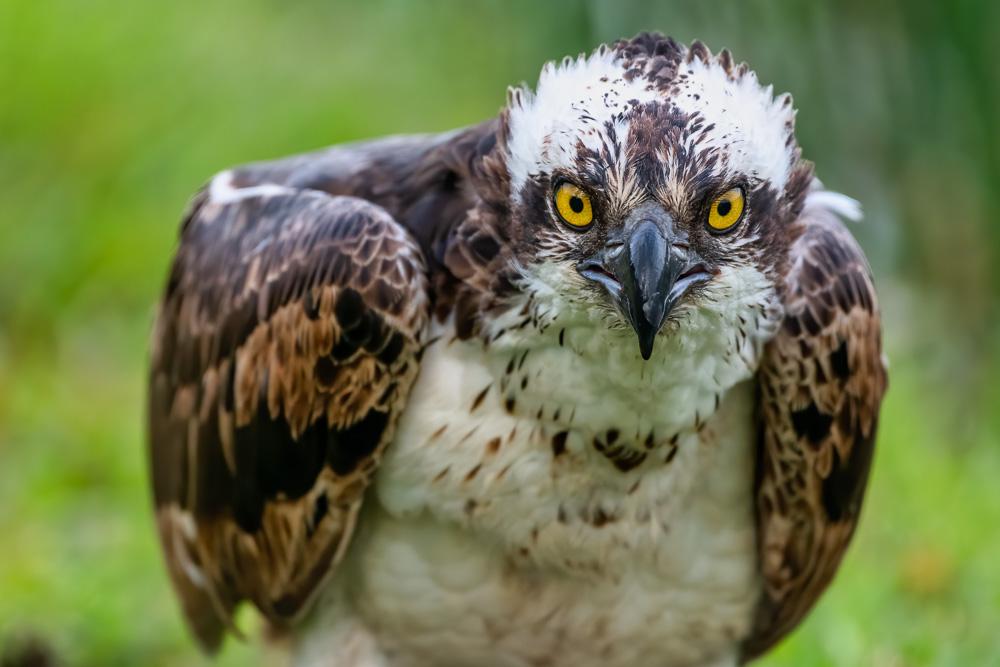
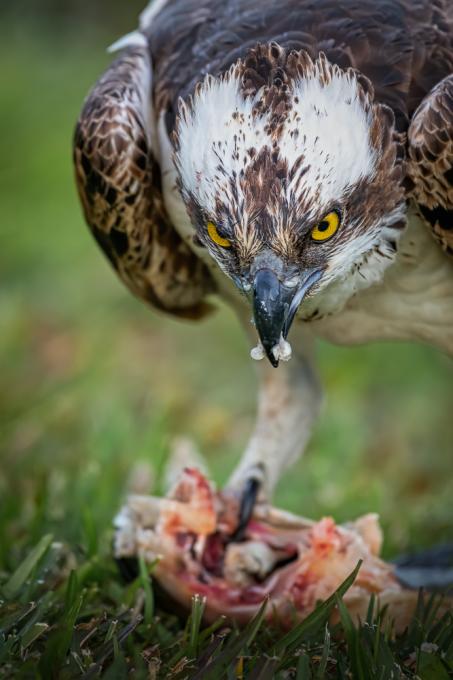
 Barn swallow with subject in focus and background blurred
Barn swallow with subject in focus and background blurred
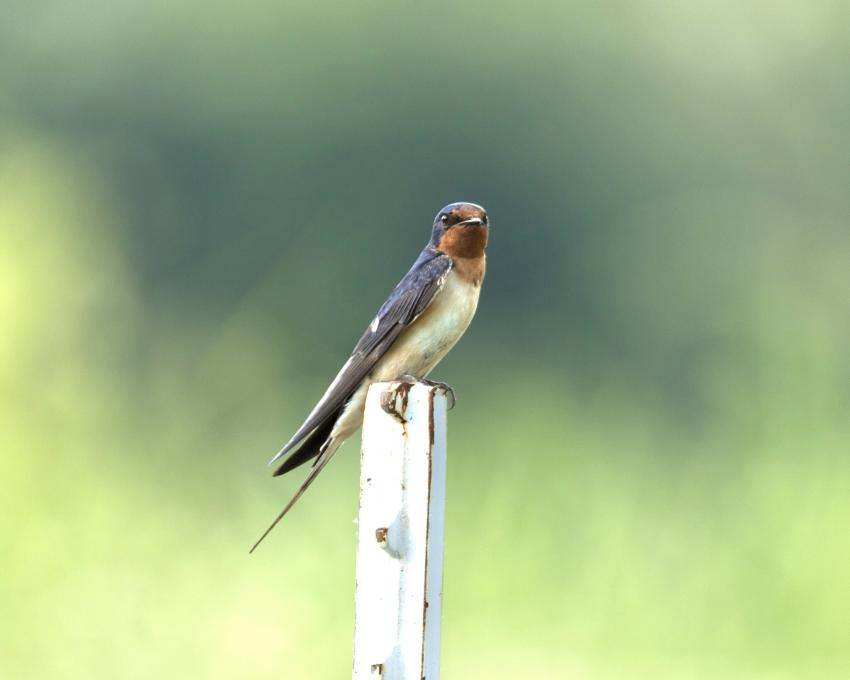 Bald eagle side lighting
Bald eagle side lighting



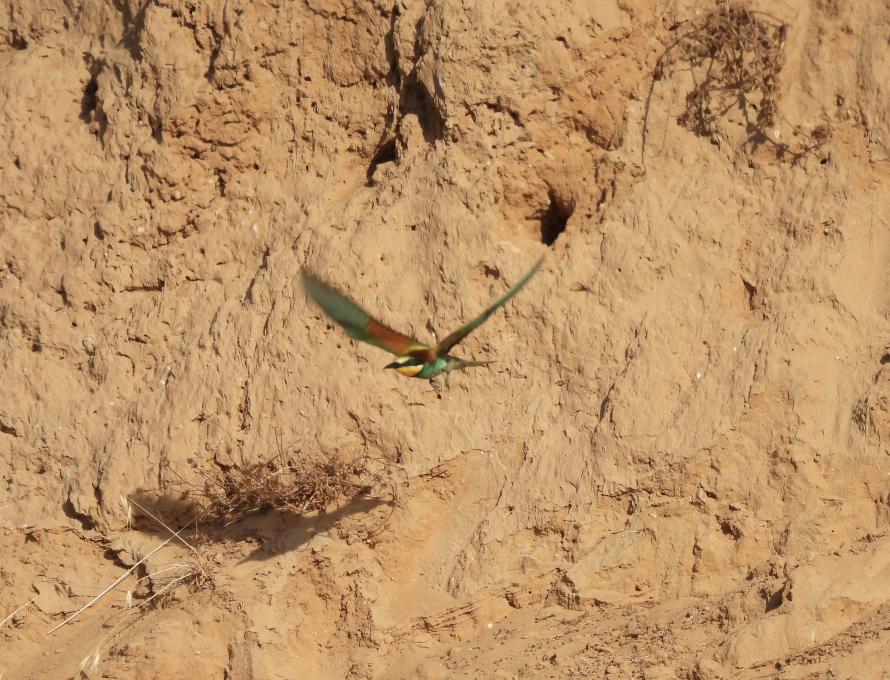
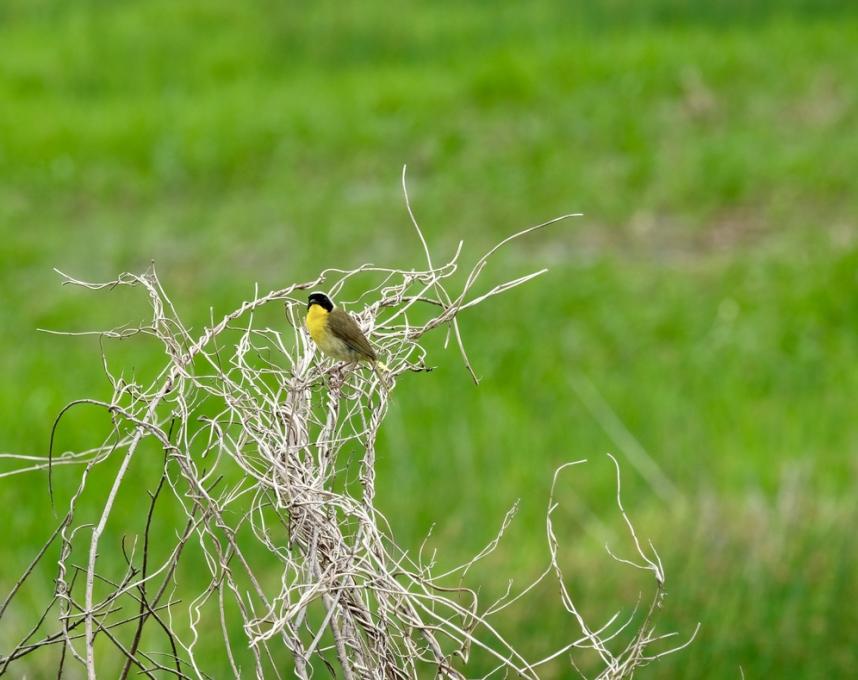
 I worked with the rule of thirds in both these images. The first, common yellowthroat, and the second, sandhill crane photos were taken on an overcast day so the lighting was not as dramatic. I was more focused on exposure-light meter to prevent them from being too dark.
I worked with the rule of thirds in both these images. The first, common yellowthroat, and the second, sandhill crane photos were taken on an overcast day so the lighting was not as dramatic. I was more focused on exposure-light meter to prevent them from being too dark. 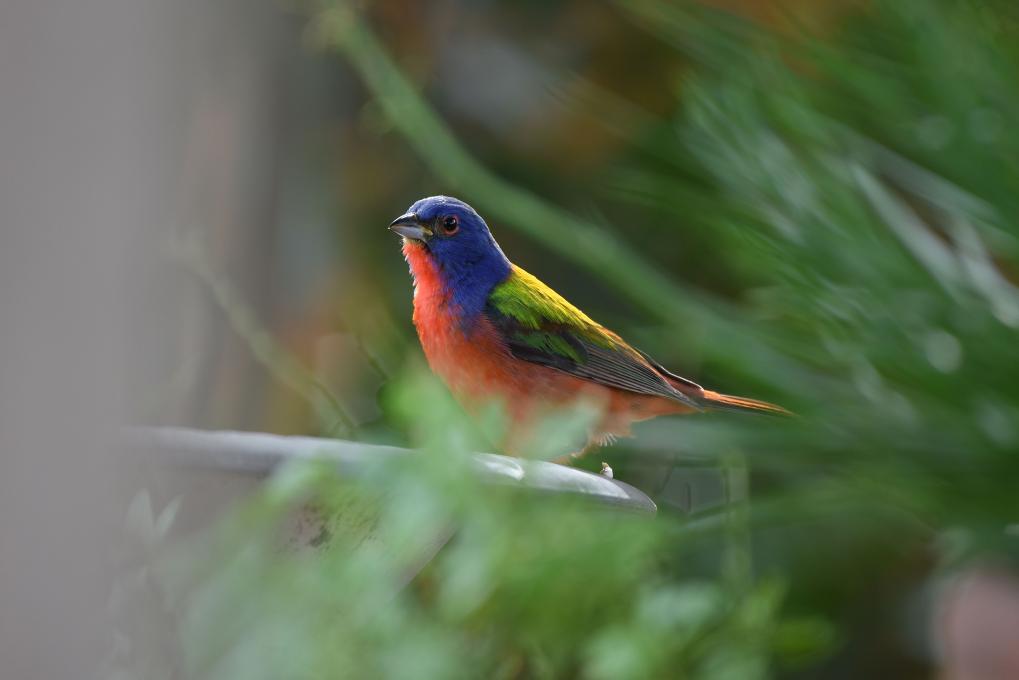


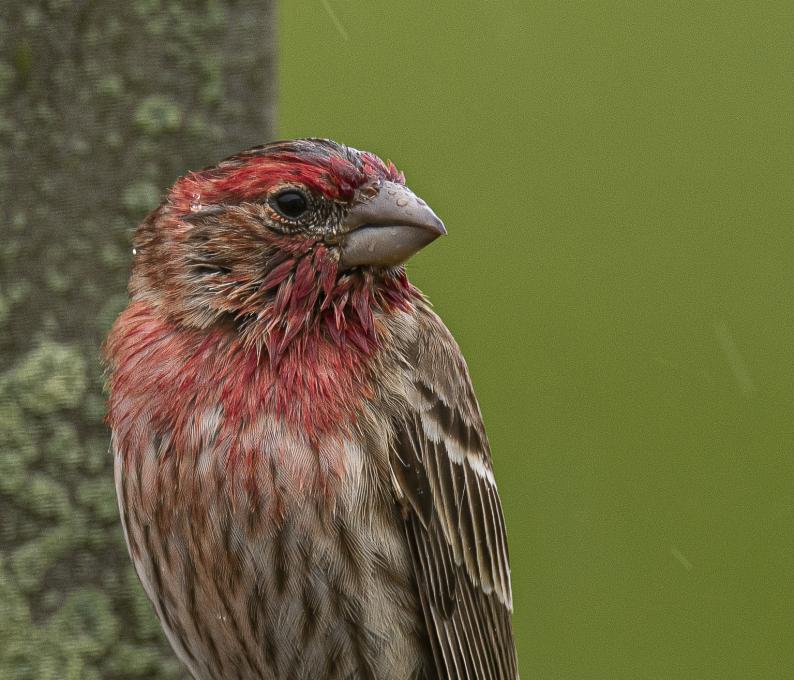
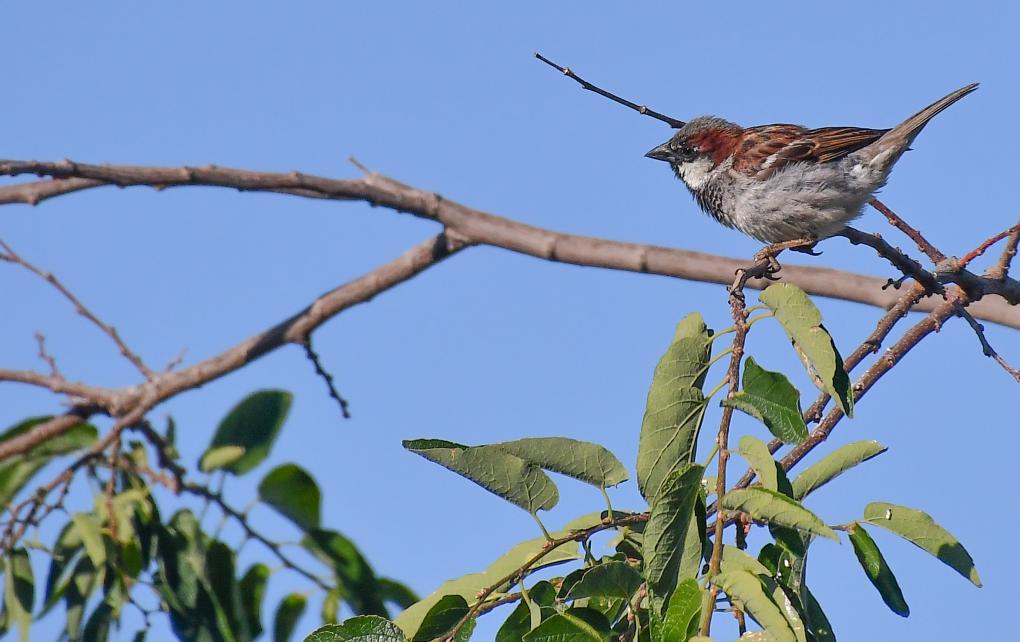
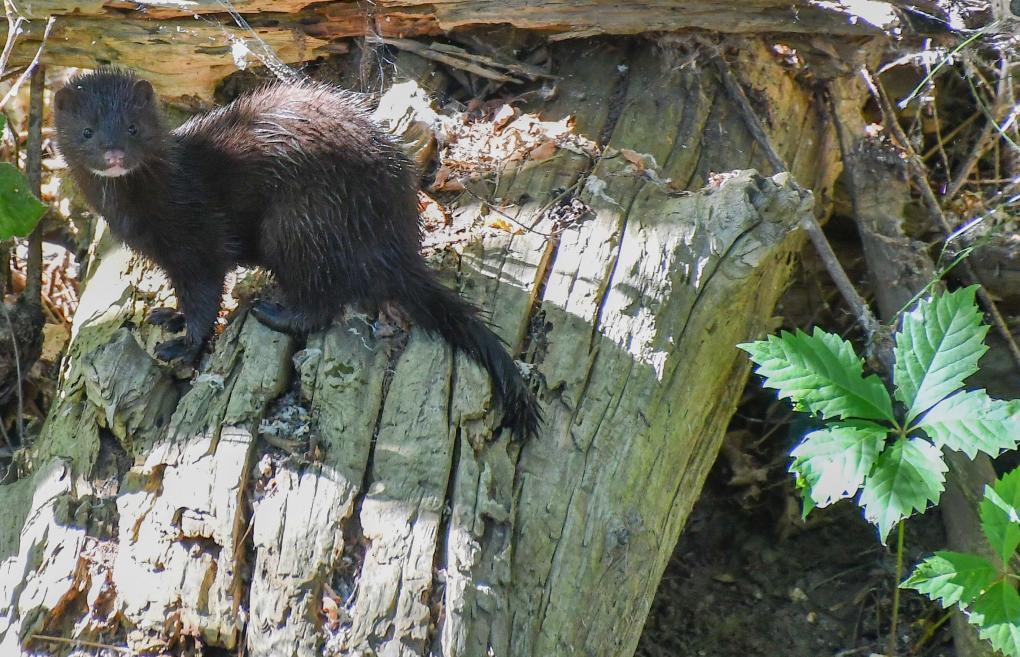 Sorry this isn't a bird-but I used spot metering on this mink's face like Melissa did on the crow to get his eyes, plus backlighting to highlight his fur. It's really hot here today and the birds just weren't out! I'm learning to change my metering mode to accommodate different situations.
Sorry this isn't a bird-but I used spot metering on this mink's face like Melissa did on the crow to get his eyes, plus backlighting to highlight his fur. It's really hot here today and the birds just weren't out! I'm learning to change my metering mode to accommodate different situations. 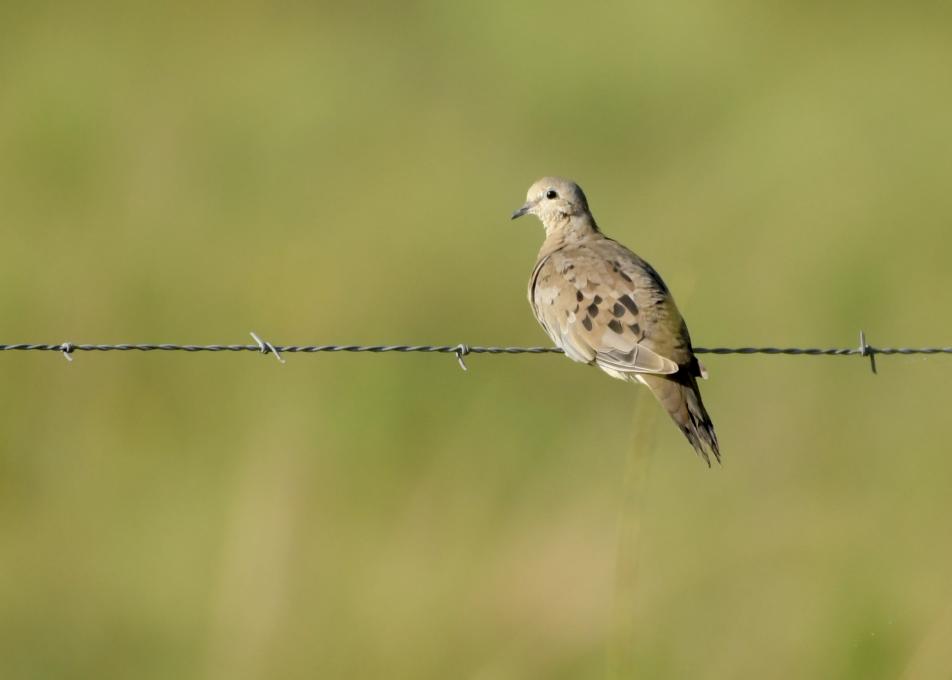
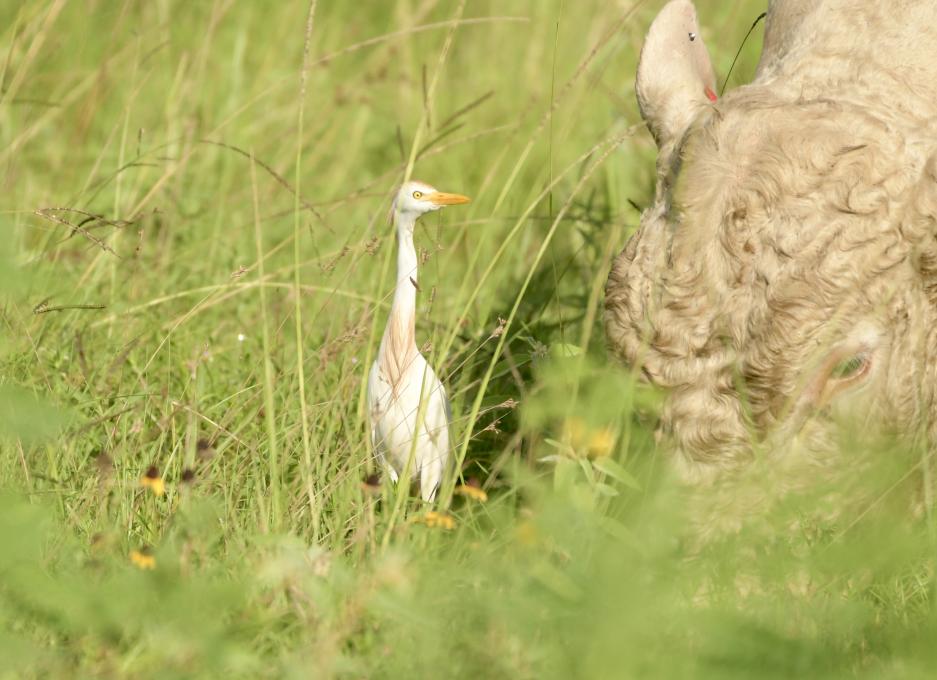
 The Dove is following the rules I think! The Cattle Egret doesn’t but we wanted to include the Bull with it. Not sure where the Killdeer fits in but liked the shot!
The Dove is following the rules I think! The Cattle Egret doesn’t but we wanted to include the Bull with it. Not sure where the Killdeer fits in but liked the shot! 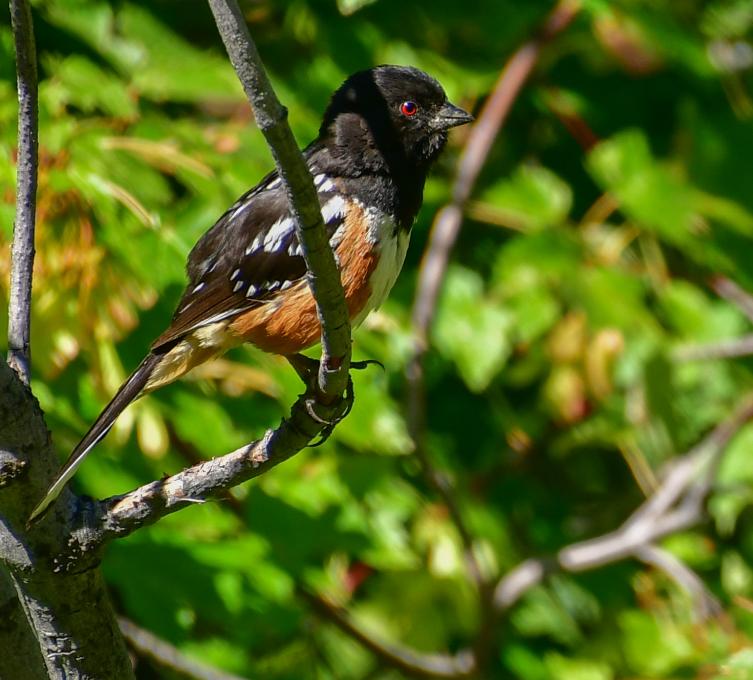
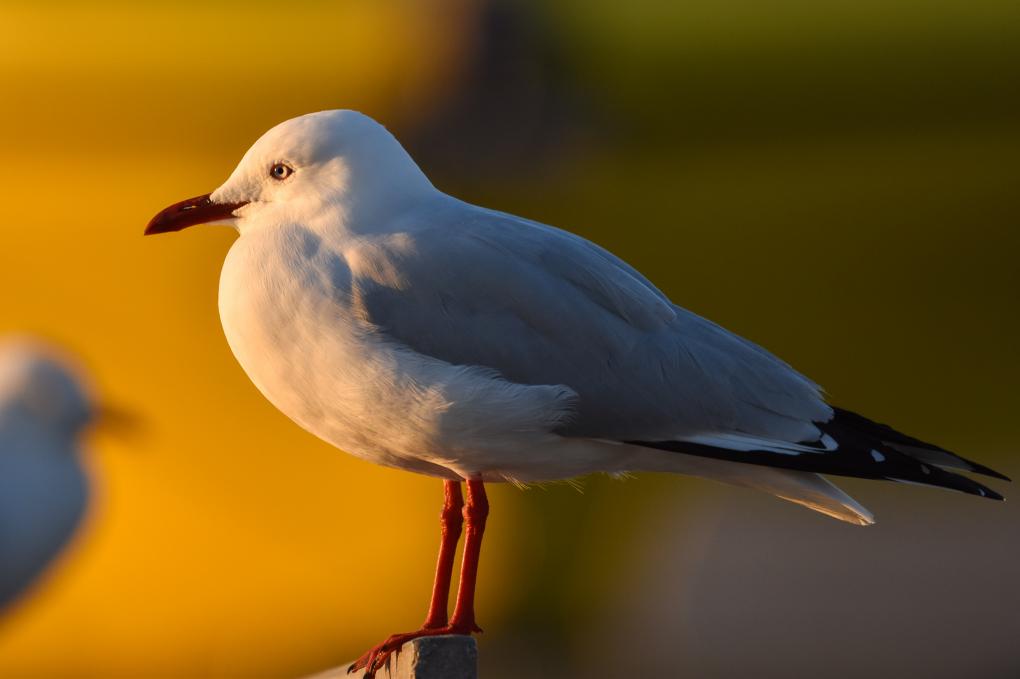

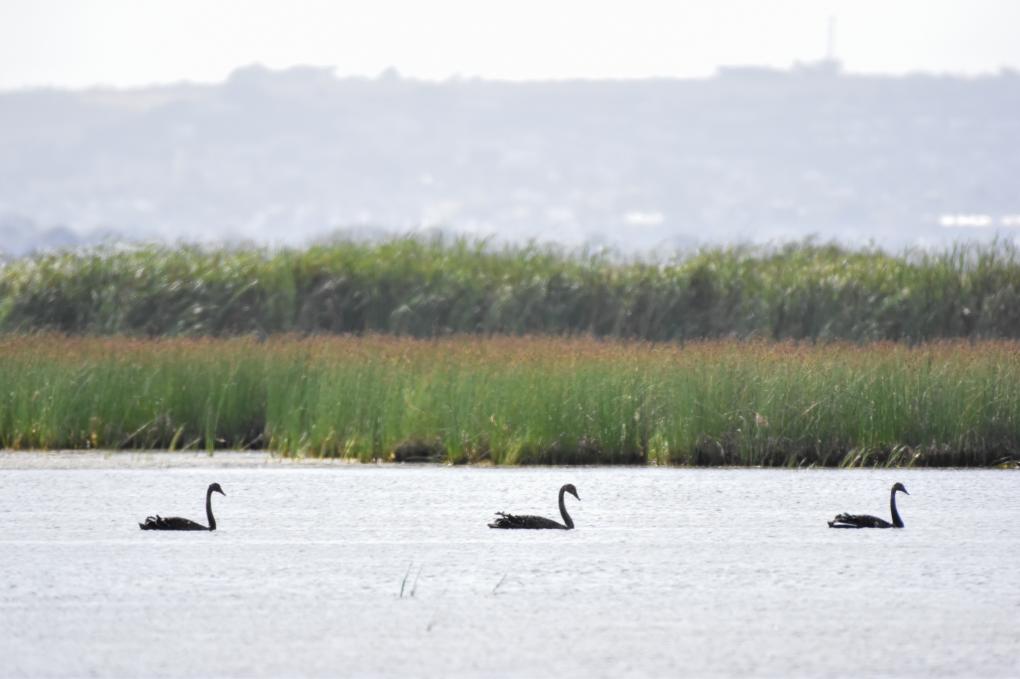

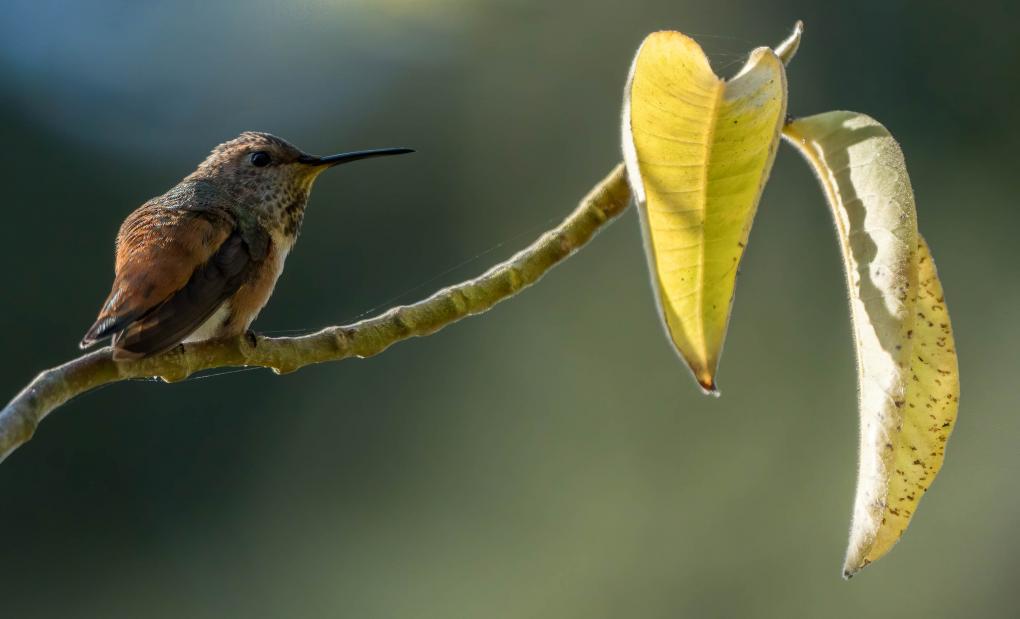 I took this photo at 1/1250, f/6.3 with ISO 500. I also touched it up a bit in Lightroom.
I took this photo at 1/1250, f/6.3 with ISO 500. I also touched it up a bit in Lightroom. 

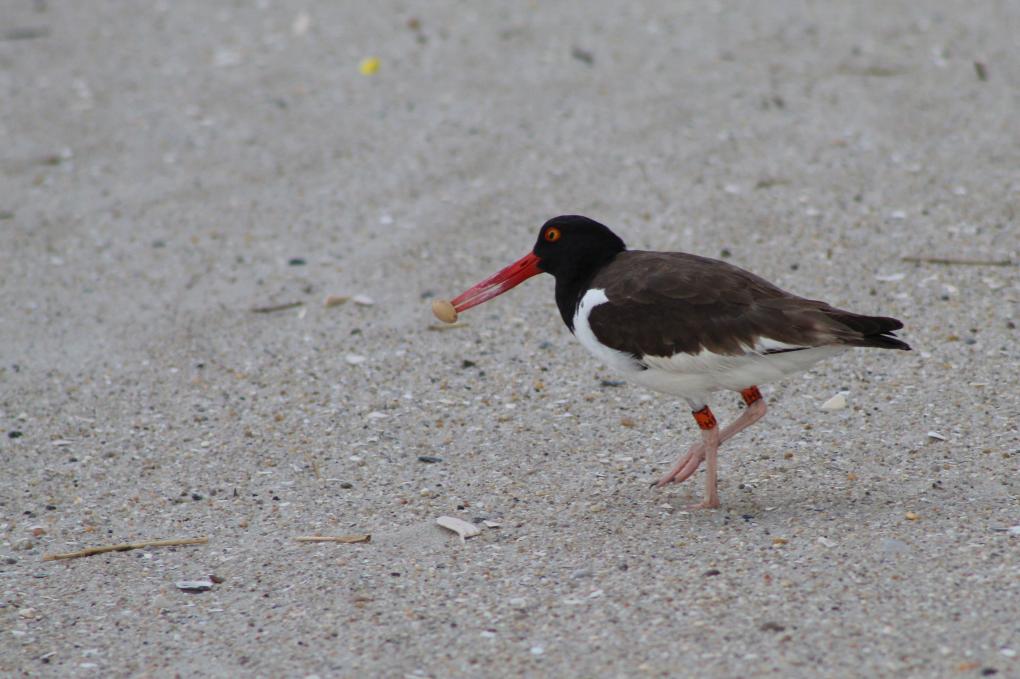 The picture of the American Oystercatcher, taken on my day trip pilgrimage to Cape May yesterday, follows the rule of thirds. The background is blurred in the Red-Tailed Hawk picture. For the Bald Eagle (taken on July 4th!), I broke the rule of thirds. The angle of the bird flying away, and the lack of anything but blue sky beyond it, made it look better to me this way. Fun fact, the Eagle and the Hawk (wasn’t that a John Denver song) were taken only 12 minutes apart, both using the car as a blind, sort of. The Eagle was too far away to care about me. I saw the hawk perched on a wire as I drove home from where I’d just seen the Eagle. The road was very lightly traveled at the time, so I was able to turn around, go back, stop underneath, and take the picture through the sunroof.
The picture of the American Oystercatcher, taken on my day trip pilgrimage to Cape May yesterday, follows the rule of thirds. The background is blurred in the Red-Tailed Hawk picture. For the Bald Eagle (taken on July 4th!), I broke the rule of thirds. The angle of the bird flying away, and the lack of anything but blue sky beyond it, made it look better to me this way. Fun fact, the Eagle and the Hawk (wasn’t that a John Denver song) were taken only 12 minutes apart, both using the car as a blind, sort of. The Eagle was too far away to care about me. I saw the hawk perched on a wire as I drove home from where I’d just seen the Eagle. The road was very lightly traveled at the time, so I was able to turn around, go back, stop underneath, and take the picture through the sunroof.  This is a photo in which I think I broke some of the rules. The photo of the Secretary Bird is taken with the negative space behind the bird rather than (the traditional) in front of the bird. I did this to emphasize the Secretary Bird's rearward facing plumes.
This is a photo in which I think I broke some of the rules. The photo of the Secretary Bird is taken with the negative space behind the bird rather than (the traditional) in front of the bird. I did this to emphasize the Secretary Bird's rearward facing plumes.
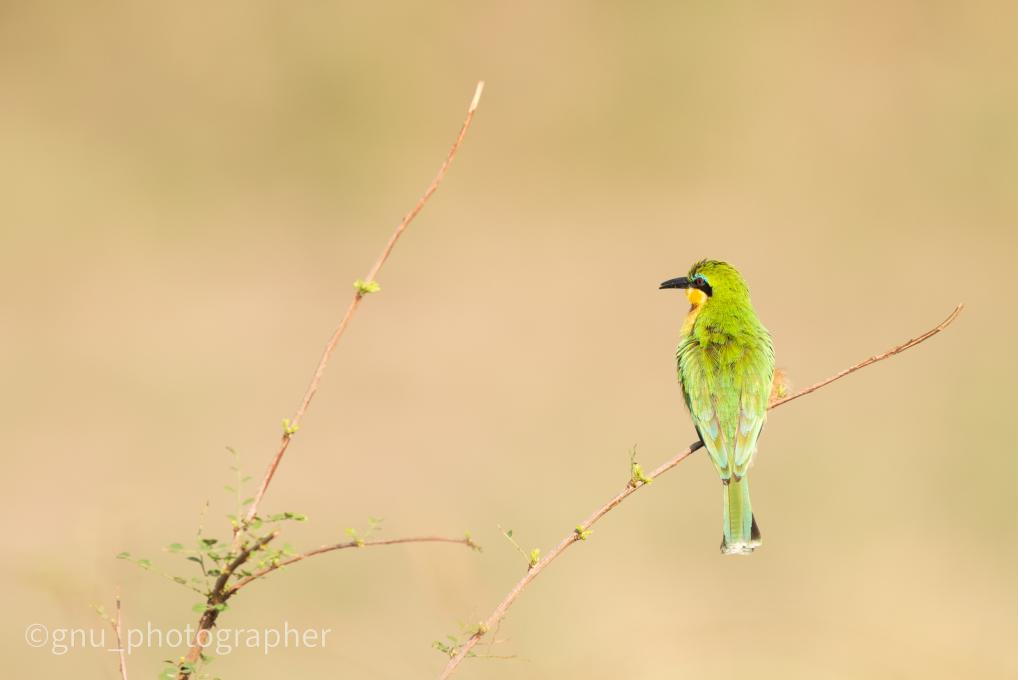 I think this Bee Eater photo is more in line with usual bird portrait rules, creamy background, rule of thirds. There is no catchlight in the eye but the iris is clear and evenly lit.
I think this Bee Eater photo is more in line with usual bird portrait rules, creamy background, rule of thirds. There is no catchlight in the eye but the iris is clear and evenly lit. 